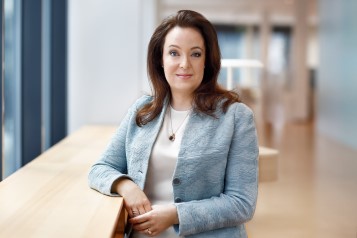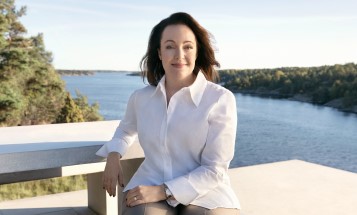Vattenfall’s earnings at the same level as last year, and the company develops in line with its strategic direction.
Vattenfall delivered a stable result for the first half of 2018. The underlying operating profit amounted to SEK 13.1 billion which is level with the corresponding period a year ago. Strained market conditions in the Heat business were compensated by higher earnings in other operating segments, especially during the first quarter.
Video player requires marketing cookies.
To view this content please click here to allow marketing cookies.
“We are doing well in terms of going in the strategic direction – we are quite clearly doing what we are saying we are going to do. We are investing in wind, growing in customer sales, we have had a good production and we are investing quite a lot in the distribution network. The result is more or less the same as last year with some differences in it, but I think the direction is really good,” says Vattenfall’s CEO Magnus Hall.
Important progress in sales and services
The underlying profit for Customers & Solutions increased by 0.1 billion to SEK 1.2 billion as a result of positive sales and margin developments. During the second quarter, Vattenfall entered into an agreement for the supply of renewable electricity to two of Facebook’s data centres in the Nordic countries. The supply agreement is in combination with a contract to provide market access and power balancing in Vattenfall’s Business Area Markets. Furthermore, a partnership was formed with Volvo Cars in Sweden for charging infrastructure.
Renewable electricity generation growing in importance
Renewables continued to grow in importance for Vattenfall’s earnings performance. The underlying profit from the Wind business increased by SEK 0.6 billion to SEK 1.6 billion in spite of lower wind in all markets. Higher prices partly counterbalanced the unfavourable wind, and in May the construction of Vattenfall’s so far largest onshore wind farm Blakliden/Fäbodberget (353 MW) commenced in northern Sweden to add further capacity in the future.
“We will definitely continue to invest in wind as it is one of our main growth areas. So for the next two years, 60 per cent of our growth investments will go into our wind business,” says Anna Borg, Vattenfall’s CFO.
Nuclear and Hydro supported by higher electricity prices, but Heat is hit by higher fuel and CO2 costs
The underlying profit in Power Generation increased by SEK 0.9 billion to SEK 6.5 billion during the first six months, primarily due to a 2.8 TWh increase in hydro power generation, higher prices achieved in the Nordic countries and a positive effect of SEK 1.4 billion from the abolishment of the Swedish nuclear capacity tax. The impact of higher prices were limited, especially during the second quarter, due to hedges made.
Higher prices of coal, gas and CO2 emission allowances continued to push electricity prices up on the Continent but had a negative effect on margins for coal- and gas-fired power generation. The reduction in underlying profit from the Heat business of SEK 1.7 billion to SEK 1.0 billion is to a large part attributable to this trend as well as one-time effects partly related to subsidies.
“The margin for our heat business between the fuel and CO2 on one hand and the price on the other is very squeezed. That is clearly visible in our heat business. We are progressing well in terms of our CO2 road map, so we will long term be less exposed to this, but right now it is hitting our heat business,” Anna Borg explains.
Vattenfall continues phasing out fossil fuels along the lines of its strategy and in the Netherlands, where coal-based generation will be banned by 2030, the company will close its Hemweg 8 coal-fired power plant at the latest by the end of 2024. This is ten years before the end of its technical life span. Investigations are also conducted into the possibility of using hydrogen instead of natural gas at the Dutch gas-fired power plant Magnum, something that in the long run also could be used for the gas-fired power plant Hemweg 9. In Berlin, three power-to-heat boilers have been installed for what will be Germany’s largest plant converting electricity into heat.
Increased investments in networks and development of smart grid technology
The underlying profit for Distribution increased by SEK 0.1 billion to SEK 3.4 billion. An extensive modernisation of the electricity grid continues. Vattenfall is increasing its investments and will invest some SEK 20 billion over the next five years in the Swedish grid. This is done at the same time as the number of requests for new connections for homes, electricity-intensive industry and renewable electricity production is rising.
Vattenfall as a partner for industry
Vattenfall has taken some significant steps in Sweden within industry partnerships to decarbonise industrial processes such as for instance steel production.
“Industry partnerships are also relevant in other markets, where we see more renewables coming into the system and we can use that to electrify processes that emit CO2. We clearly see an opportunity where we want to develop that type of cooperation. I think that, from a Vattenfall perspective, to be the corporate partner for big companies in terms of electrification processes is a very strong position that we can take - and I don’t see anybody else really doing that, so we are well ahead and should keep that momentum,” Magnus Hall concludes.
Business highlights, April–June 2018
|
Financial highlights, January–June 2018
Financial highlights, April–June 2018
|


